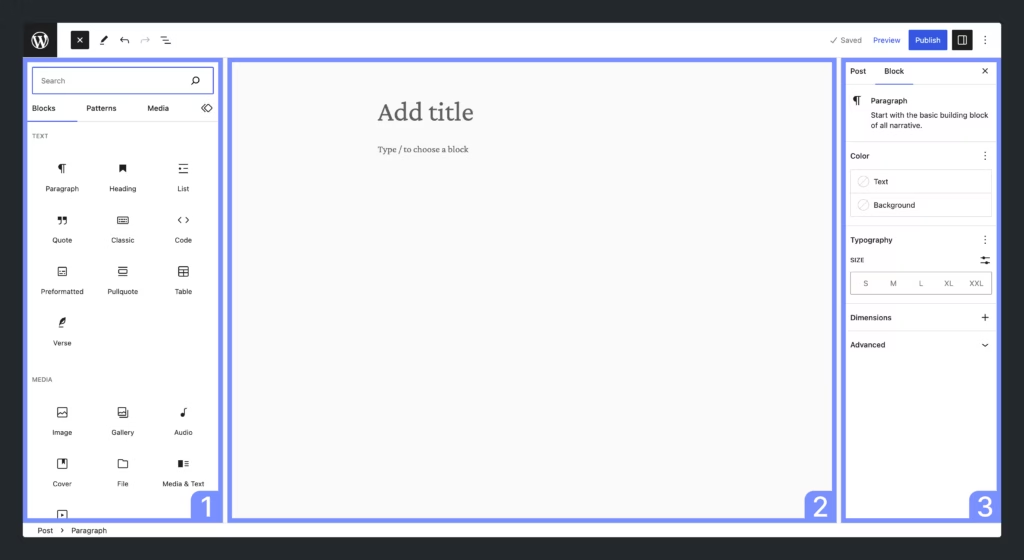(Even Though I Could Use Anything Else)
As a frontend engineer with years of experience across JavaScript frameworks, headless CMS architectures, and static site generators, I often get asked: “Why are you still using WordPress for your own site?”
It’s a fair question—especially when tools like Next.js, Astro, Sanity, and even Notion-as-CMS are all gaining traction. But after building and maintaining sites for companies ranging from startups to Fortune 100 brands, my answer remains the same:
WordPress isn’t outdated. It’s evolved—and for the right use case, it still delivers unmatched editorial power, flexibility, and speed.
Here’s why I still build my site in WordPress—and why you might want to, too.
1. Editorial UX That Actually Works

No matter how slick your frontend is, your CMS still needs to be usable. With Gutenberg (WordPress’ block editor), I can empower non-technical users to manage content with real-time visual feedback—no training required.
For solo creators, teams, or clients, that means:
- Visual editing without breaking layout integrity.
- Custom blocks that enforce design consistency.
- A system built for actual humans—not engineers pretending to be content strategists.
If you’ve ever had to explain how to “update meta fields in the headless CMS backend and wait for a redeploy,” you know how important this is.
2. The Block System Scales Beautifully
I’ve built custom block libraries that are scalable, accessible, and maintainable—without reinventing the wheel. WordPress blocks (especially when structured with theme.json, block variations, and reusable patterns) let me:
- Create reusable design systems within WordPress.
- Mirror component-driven development philosophies from React.
- Avoid bloated page-builder plugins while still offering full flexibility.
Need custom interactions or a layout that reflects a specific brand identity? You can build it once and let users deploy it anywhere.
3. Extendability Is Built-in
WordPress thrives in complexity. I’ve integrated it with CRMs, eCommerce platforms, headless frontends, and APIs with ease.
More importantly, I can:
- Write custom PHP for backend logic.
- Build bespoke REST endpoints or use GraphQL (via WPGraphQL).
- Hook into nearly anything thanks to WordPress’ mature action/filter architecture.
For developers who want control without babysitting a million third-party services, this is huge.
4. It’s Still Ridiculously Fast to Deploy and Update
From a productivity standpoint, WordPress is hard to beat. I can:
- Spin up a new site in minutes.
- Use existing plugins when it makes sense.
- Apply custom code when it doesn’t.
You’re not locked into a rigid system—you’re choosing the level of abstraction that makes sense for your current need.
And with tools like HeadstartWP, you can modernize your stack with Composer, PSR-4 autoloading, and automated deployment pipelines—no spaghetti code required.
5. It’s Not About Hype—It’s About Fit
It’s easy to chase the next hot tech. I’ve used React, Svelte, Astro, Eleventy, and others—and they each have their place.
But when I need:
- A battle-tested CMS,
- Solid performance with caching/CDNs,
- And a client-friendly editing experience,
WordPress remains a smart, strategic choice—especially when paired with modern frontend practices and a thoughtful development approach.
💬 Final Thoughts
I don’t use WordPress because I have to. I use it because it works.
For me. For clients. For content.
When built the right way—with accessibility, performance, and UX in mind—WordPress is still one of the most capable, extendable, and reliable tools in a modern developer’s toolkit.
If you’re a developer thinking about what stack to use for your next project, don’t count WordPress out. You might just find that what you need was here the whole time—just waiting for a modern take.

Leave a Reply